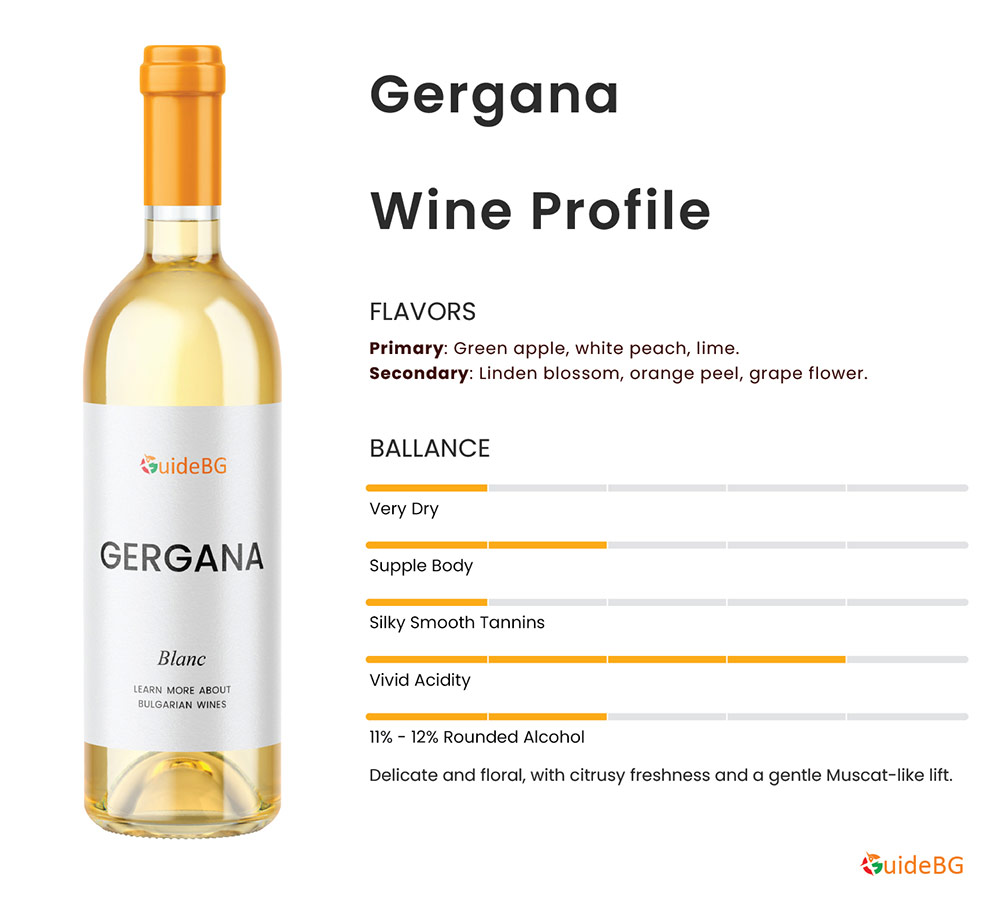Gergana (Гергана) is a Bulgarian white grape variety created in 1956 by the Institute of Viticulture and Enology in Pleven. It results from crossing two distinctly aromatic and elegant parents: Dimyat × Muscat Ottonel. The goal was to combine Dimyat’s freshness and structure with the perfumed floral character of Muscat, producing a light, aromatic white wine grape suited for early drinking and fresh styles. Gergana is named after the beloved Bulgarian female name and folk ballad “Gergana”, reflecting its graceful and traditional character.

Gergana is typically vinified dry and unoaked, highlighting its pure fruit expression, gentle perfume, and crisp finish. Though limited in production, it offers excellent potential for summer whites and aromatic blends.
Serving
8-10°C

Aroma white

not required

Food Pairing
It pairs beautifully with light cheeses, roasted vegetables, fresh salads, and grilled fish. Its floral and citrus profile complements Bulgarian tarator, banitsa with spinach, or Mediterranean mezze.
What to Look For?
Expect a pale lemon hue, grapefruit, green orchard fruit aromas, and subtle white blossoms. The palate is bright, dry, and elegant, with a refreshing finish.
Cellaring Potential
It is best enjoyed within 1 to 2 years, while its freshness and aromatics are vivid. It is not intended for long aging.
Breeding Background & Regional Context
Created in Pleven, Gergana reflects Bulgaria’s mid-20th-century breeding efforts to develop early-ripening, aromatic white wines suitable for various climates. It is best suited to moderate regions, mainly northern and central Bulgaria.
Alternative Grapes
Try Muscat Ottonel for more pronounced aromatics or Red Misket for a crisper, more structured version of floral Bulgarian whites. Internationally, Torrontés or Malvasia Bianca offers comparable light-bodied, perfumed profiles.


